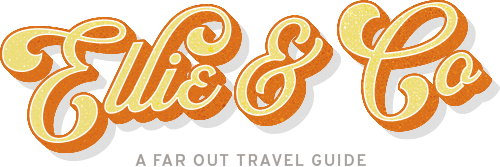Rifling through a suitcase of old postcards in a Brighton thrift shop recently I discovered this colourised one I was immediately drawn to. The beautiful building, the flowers, the Victorian-era outfits, that beautiful glass window, and the caption: Floral Hall Brighton. Say, what? Brighton was once home to this beautiful indoor flower market hall? Why have I only just found out about this?
Obviously I started looking into it.

Not a lot has been written about it. What I have found out, though, is that Brighton’s Floral Hall was inside a larger market building, located in central Brighton (just west of the Town Hall, between Market Street and Black Lion Street – not far from this hidden vintage store).

It was built in around 1900-1901, when the market area was redeveloped. It was constructed out of red brick, cast iron and glass, and featured the distinctive semicircular window, which reminded me of the ones in Covent Garden market hall. Inside, as well as the flower market, there were areas for selling vegetables and fruit. Imagine shopping for your fruit, veg and flowers here!



Just four years later, however, the entire market building closed and then demolished – a crime! – the land used as a car park for a while. I also read that the facade stayed up a little longer, although I’m not sure why, but was eventually knocked down too.


All that remains of the Brighton Floral Hall now are these few photographs and this postcard, so here it is again.

Market buildings were popular all around England in the 19th century, some of them more elaborate than others. The first of the massive halls was St John’s Market in Liverpool built in 1822, which started the trend for setting up stalls under a huge roof supported on cast-iron pillars, surrounded by walls lined with small shops.

Many Victorian market halls of a similar type followed, with glass roofs becoming increasingly popular as the century wore on. One of the most beautiful and well-known is the Covent Garden Flower Market built in London in 1871. It was designed by William Rogers of William Cubitt and Company, opened in 1872, and for the next 100 years it was the heart of London’s wholesale flower business, famously trading every day except Christmas.

New to Ellie & Co? Join thousands more and sign up for my monthly newsletter. Or follow my stories on Instagram, Twitter or Facebook.




2 Comments
What a fascinating article and a true crime this building was demolished! We have lost so many lovely buildings, Brighton was once very beautiful and we should be trying to retain its character and charm rather than demolish everything and put up drab grey boxes instead that pass for modern architecture!
Your article states that it was demolished after just 4 years, but in fact it was about forty years later.
This local history blog describes the chronology.
https://www.mybrightonandhove.org.uk/topics/topicbusi/markets-2/markets-2.
It says, “In 1900-1 the market was rebuilt by borough engineer Francis May in a red-brick and terracotta design in three sections, each with arched glass and iron roofs. Two of the sections dealt in fruit and vegetables, while the southern part was used for selling flowers, the Floral Hall. This market building itself closed in 1938 after the Circus Street building opened, and was demolished and converted into a car-park in 1940, although the Market Street fascade remained until the construction of Bartholomew Square in 1984-7”.
I certainly agree its life was far too short and in hindsight it could now have been Brighton’s “Covent Garden by the sea” tourist attraction!